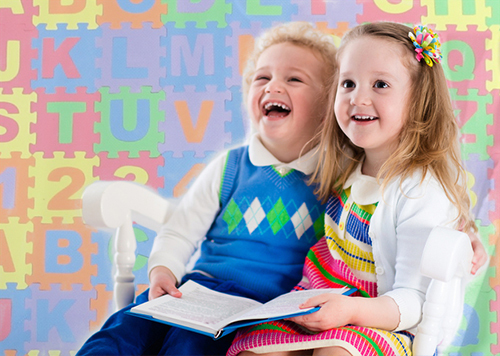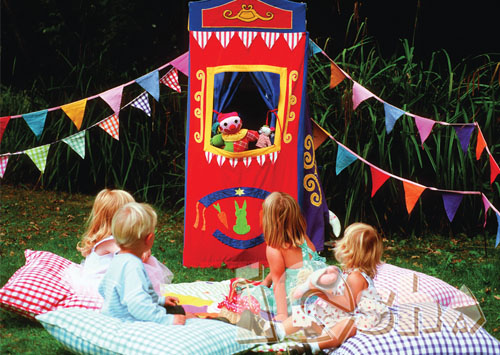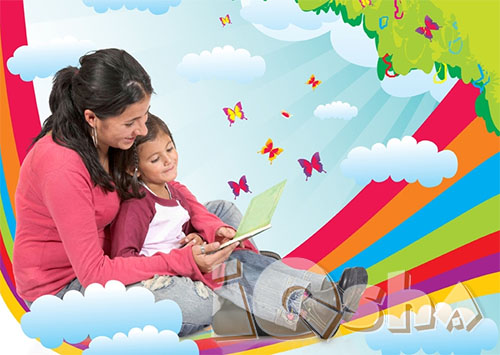
Before beginning practice,let's remember simple rules which will help to correctly acquaint kids withletters. You shouldn't call the letters as we pronounce them in the alphabet.It is simpler for children's perception the "wrong", but easy, soundnaming of letters – not [em], but [m], not [kei] but [k]. So, a child will quickly learn to connect letters in syllables,and, further, to read. It is the best of all to begin practice with thoseletters which are met most often and which a child pronounces easily. Difficulthissing is possible to learn later, it's better to start studying with vowels.
- There is a cheerful and easy way to learn letters by playing "An alphabetic lotto". At first call letters which you want to learn and find house items which name begins with the letters (for example, T – table, W window). It is important that a child knows and is able to call all the things which will be chosen for designation of a letter. Further, let the kid draw the objects on sheets of a cardboard and write letters on another sheet of paper. It is necessary only to cut drawings and letters, and your lotto is ready! Take plates with drawings to yourself, and give the letters to the kid. Show the child the picture and ask him to find a letter the word begins with. To make it simpler, at the beginning suggest choosing from two letters and then complicate the task. Such a game helps not only to learn letters but also contributes the development of visual and acoustical memory. Because you with the child not only pronounce a letter but also together draw a thing-association.
- "The Cheerful Lottery" can become a game option for the alphabet lotto. Draw a table with cells on a sheet of paper. In one cell you should draw things, animals, plants, and birds which a child is able to call. Write the letters which you want to revise. Explain to the kid that now you are going to play a cheerful lottery, and if he crosses out all the correct sections, then he will win a prize. Call letters and name of birds, plants, or animals alternately. Let the child cross out the necessary sections. If the kid can't choose a certain letter, hint the subject beginning with it. Over some time, it is possible to complicate the task by calling things and letters which aren't on the plate. Don't forget after each game to pay attention to mistakes, having corrected them with the child. A game helps your child to remember and repeat not only letters but also many things and definitions.
- For repetition of the studied letters and learning new ones we offer to play "An alphabetic hide-and-seek". Take several sheets of paper of the different size and draw on each of them a letter. Then hide the sheets in the apartment so that corners of the sheets were visible. Tell the child that letters have decided to play with him in a hide-and-seek, and suggest him to find them. The kid will cheerfully find familiar letters behind a curtain, under a sofa, in a pocket of a jacket or in a pot with a flower. It's better to remember new letters, hide them under objects which names begin with them. The alphabetic hide-and-seek is useful because they contribute to the development of attention and observation. Try to find a letter N in the apartment!
- The next play is "Letters in a house" will help to remember how to write and distinguish letters. Take a few sheets of carbon paper and cut into cards. Write a letter on a white carton sheet and make holes on colored sheets. Now cover the white sees with the colored ones. Let a child see a part of the letter through “a window” and try to guess it. If the child finds it difficult to answer the question, then you can cover the letter with a card with a window of another form or size.
- A child will remember new material better if to combine the learning and games with physical activities. Make a “letter way” by printing letters on album sheets. Spread the sheets in the room and offer to walk on it. The complexity of the task is not only to remember the letter a child is standing on but to call a word, name or a thing beginning with the letter. If the child is mistaken, he will be penalized by running with a ball, doing squats, or jumping. Only after that, he can pass to another step.
Revise repeatedly and learn letterswith your child using domestic items like pencils, spoons, macaroni, or toy cars.To remember a graphic image of the letters you can draw them on your backs,model from snow, sand, plasticine or pastry. A little of fantasy and your childwill learn to distinguish the letters and call them in different objects orevents around.
Anastacia Jurikova
The teacher of IQsha.com








